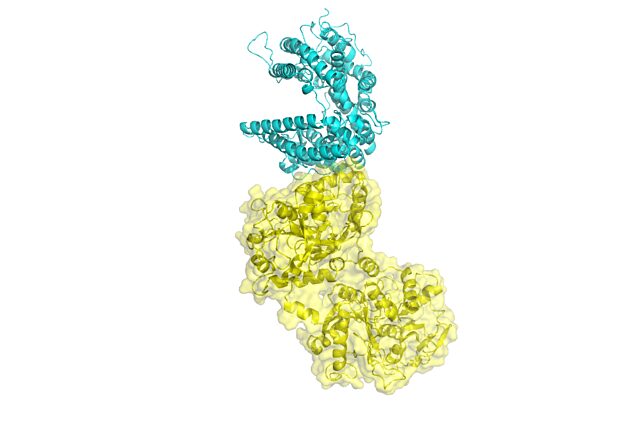Combination of two common compounds improves COVID survival in mice, UF researchers find

GAINESVILLE, Fla. — The combination of two over-the-counter compounds tested in mice significantly improved their chances of surviving the virus that causes COVID-19, University of Florida researchers have found.
The combination includes lactoferrin, a protein found in cow and human milk. When paired with diphenhydramine, an antihistamine used for allergy symptoms, the compounds also prompted a quick, major rebound in the surviving animals’ weight.
The findings are further proof of the dual-drug combination’s efficacy in inhibiting the lethal effects caused by the SARS-CoV-2 virus. In late 2021, researchers found similar potent effects during tests on monkey cells and human lung cells.
“We were very happily surprised that the two-drug combination extended the survival of the mice and even resulted in a complete recovery in one subset of mice,” said David A. Ostrov, Ph.D., an associate professor in the UF College of Medicine’s department of pathology, immunology and laboratory medicine. The findings were published recently in the International Journal of Molecular Sciences.
While the findings are encouraging, they have not yet been tested in a clinical trial in humans and Ostrov cautions against self-medicating with either diphenhydramine or lactoferrin as a COVID-19 treatment or prevention. The lactoferrin used in the research differs slightly from the type that is typically available to consumers, he noted, which is commonly used as a supplement to treat stomach and intestinal ulcers, among other uses.
UF is preparing an investigational new drug application for federal regulators — an important step toward a human clinical trial. That application could be filed by the end of the year, Ostrov said.
In the current study, the mice were exposed to UF-1, a particularly virulent strain of SARS-CoV-2 that was isolated from UF Health’s first COVID-19 patient in March 2020. Ten days after being infected, the mice treated with the two drugs regained 20% of their body mass and had a 20% probability of survival. A control group of untreated mice lost the same amount of body mass and none survived past eight days.
Researchers focused on sigma receptor ligands, chemical messengers that bind to protein molecules. That mechanism is believed to play a key role in preventing the cell stress that allows SARS-CoV-2 and similar coronaviruses to flourish.
“The stress creates an environment that’s perfect for coronaviruses to replicate,” Ostrov said.
Diphenhydramine works against SARS-CoV-2 by binding to sigma receptors and inhibiting cell stress, thus producing antiviral effects. Lactoferrin works by regulating the immune response to the virus as well as competing with the virus for binding to the host cell receptor, ACE2. With the two drugs working to calm cellular stress and regulate immunity at multiple points, the virus’s lethal effects are controlled.
“The drugs’ ability to boost survival rates and prompt a sharp rebound in body weight is encouraging,” said Reed Berkowitz, an undergraduate researcher in Ostrov’s lab and a co-author of the paper. The mice used in the experiments are particularly relevant because they can effectively simulate the human response to SARS-CoV-2.
The researchers said developing a shelf-stable, broadly effective antiviral treatment is important for several reasons: Vaccine efficacy has dropped as newer SARS-CoV-2 variants emerged. Vaccine manufacturers also struggle with long regulatory approval and manufacturing times. And the use of monoclonal antibodies to treat COVID-19 has largely stopped because mutations in new virus variants makes it much less effective.
A better strategy, the researchers say, is to focus on broadly effective treatments that attack current and future coronaviruses by interrupting their life cycle at multiple steps.
“We believe that this combination shows significant promise for future variants and coronaviruses,” Berkowitz said.
This is because the combination targets steps of the life cycle common to all coronaviruses, he added.
The researchers have also begun studying another sigma receptor binding compound, known as CM-398. Ostrov said that drug could ultimately prove to be better and more potent than diphenhydramine when paired with lactoferrin, although more preclinical testing is needed.
Scientists from the University of Hawaii and UF’s Emerging Pathogens Institute, College of Liberal Arts and Sciences and College of Pharmacy collaborated on the research. Funding was provided by the UF College of Pharmacy.
About the author
